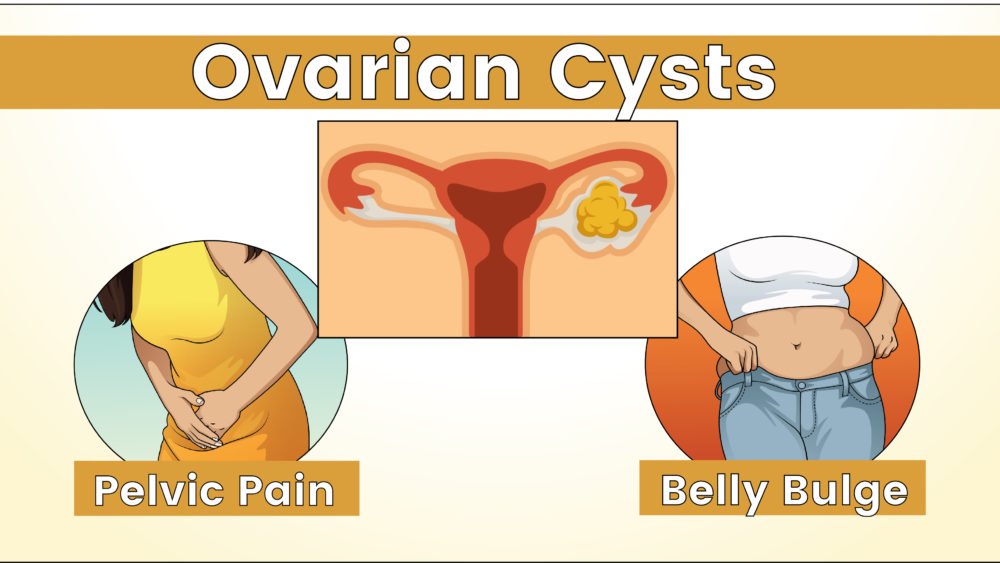Ovarian Cyst Removal in Nepal
Search and Compare the Best Clinics and Doctors at the Lowest Prices for Ovarian Cyst Removal in Nepal

Find the best clinics for Ovarian Cyst Removal in Nepal
No clinics available
Ukraine offers the best prices Worldwide
Price: $ 714

- Home
- Nepal
WHY US?
At Medijump, we're making medical easy. You can search, compare, discuss, and book your medical all in one place. We open the door to the best medical providers worldwide, saving you time and energy along the way, and it's all for FREE, no hidden fees, and no price markups guaranteed. So what are you waiting for?

Free

Best Price

Widest Selection

Risk-Free
What you need to know about Ovarian Cyst Removal in Nepal

Ovarian cyst removal is a surgical procedure performed on ovarian cysts – fluid-filled sacs that grow in or on the ovaries. It is typically performed when the cyst is causing such symptoms as Bloating and Pelvic pain. Ovarian cysts normally develop as a result of the menstrual cycle and other types of cysts are less common. The procedure can be done through laparoscopic surgery (minimally invasive), but in some cases, it is done through an open surgery when a larger cut is required.
What does a Ovarian Cyst Removal Procedure Involve?
Both open surgery and laparoscopic surgery are performed under general anesthetic. With laparoscopic surgery, your surgeon will make small incisions in your abdomen to insert a small instrument into your abdomen to remove the cysts. With open surgery, your doctor makes a large incision in your abdomen; they may also remove the ovaries and uterus if the cyst is cancerous.
How Long Should You Stay in Nepal?
You may be required to stay in the hospital for one to two days. However, some patients are discharged on the same day of the surgery. Plan to stay in Nepal for at least seven days for the initial recovery and to attend follow-up check-ups and for your surgeon to remove the stitches.
What's the Recovery Time for Ovarian Cyst Removal Procedures in Nepal?
The recovery period after laparoscopic surgery is a lot shorter than open surgery, you may be able to get back to work after a week and return to your normal routine in 2 weeks. After open surgery, it may take up to 6 weeks until you can go back to your normal routine.
What sort of Aftercare is Required for Ovarian Cyst Removal Procedures in Nepal?
You are not allowed to do any strenuous exercises until you are fully recovered, but you should take several 10 to 15 minutes short walks in the first few days. Your surgeon will give you instructions that include diet and caring for your healing wounds.
What's the Success Rate of Ovarian Cyst Removal Procedures in Nepal?
The success rate for ovarian cyst removal is known to be high. However, you need to be aware of the risks and side effects of the procedure, including swelling, infection, blood clots, and damage to other organs. Laparoscopic surgery is known to be a lot safer and has fewer complications.
Are there Alternatives to Ovarian Cyst Removal Procedures in Nepal?
If the ovarian cyst is not causing any symptoms, your doctor may advise you to simply keep an eye on it instead of having any treatment. You may be asked to have a regular ultrasound scan to check if the cyst goes away or changes in size.
What Should You Expect Before and After the Procedure
Having an ovarian cyst can cause pain and other symptoms. In some cases, the cyst can also be cancerous and dangerous. After an ovarian cyst removal, you may no longer feel the symptoms and your risk of cancer is reduced.
Whilst the information presented here has been accurately sourced and verified by a medical professional for its accuracy, it is still advised to consult with your doctor before pursuing a medical treatment at one of the listed medical providers
No Time?
Tell us what you're looking for and we'll reachout to the top clinics all at once
Enquire Now

Popular Procedures in Nepal
Prices Start From $175

Prices Start From $260

Prices Start From $714

Recommended Medical Centers in Nepal for procedures similar to Ovarian Cyst Removal

- Interpreter services
- Translation service
- Religious facilities
- Medical records transfer
- Medical travel insurance
- Health insurance coordination
- TV in the room
- Safe in the room
- Phone in the room
- Private rooms for patients available

- Interpreter services
- Translation service
- Religious facilities
- Medical records transfer
- Medical travel insurance
- Health insurance coordination
- TV in the room
- Safe in the room
- Phone in the room
- Private rooms for patients available

- Interpreter services
- Translation service
- Religious facilities
- Medical records transfer
- Medical travel insurance
- Health insurance coordination
- TV in the room
- Safe in the room
- Phone in the room
- Private rooms for patients available
Ovarian Cyst Removal in and around Nepal
Introduction
Nepal is a country in South Asia, sandwiched between India and China. Home to the mighty Mount Everest, this incredible country has diverse landscapes, from the Himalayan Mountains in the north to the sprawling plains in the south. Towering mountains, charming hill villages, golden mountains, and jungle wildlife, Nepal is truly one of the world’s best travel destinations. Beyond its nature and culture, this country is also increasingly popular for its healthcare. With its affordable high-quality medical facilities, Nepal is considered to have immense potential for medical tourism, due to the availability of good infrastructure, highly trained specialists, modern medical equipment, and relatively cheaper medical treatment. In fact, it’s currently the fastest-growing segment of the country’s tourism. Medical tourists coming to Nepal are usually seeking exceptionally high medical treatment at competitive rates. Some of the most sought after procedures are dental treatments, cardiac services, and neurological treatments.
Popular Cities and Regions in Nepal
Kathmandu, the capital and largest city in Nepal, is historic, enticing, spiritual, and vibrant. One of the most famous attractions in the city is the old town, where tourists can find the most popular Tibetan pilgrimage site, the Kathesimbhu Stupa. Another top attraction is Kumari Bahal, which is the home of the Kumari, the girl who is selected to be the town’s living symbol of Devi. Tourists looking to relax in a more laid-back vibe usually go to Pokhara. Stretching along the shore of an idyllic lake, it offers spectacular scenery. It also boasts a thriving adventure-sports industry, from paragliding to paddle boats. Anyone who wants to experience an ancient way of life should visit Bhaktapur, which is filled with artisan weave cloths, amazing cuisine, and beautiful temples.
Transport in Nepal
The main international airport in Nepal is Tribhuvan International Airport, which serves flights to and from numerous cities in Asia, such as Delhi, Hong Kong, and Dubai. Getting around the country can be a challenge, but public transportation is available. Buses are affordable, however, they tend to be overloaded. Tourist buses are the best way to travel around as they are in good condition.
Visas in Nepal
Citizens of India do not need a visa to enter Nepal without restrictions. Citizens of almost all nations, including the US and all EU countries, can obtain a visa on arrival that is valid for up to 90 days. Only holders of passports from 12 countries, need to have a visa in advance.
Weather in Nepal
Nepal has five seasons. Spring starts in March until May, it offers pleasant weather that is not too cold nor too hot. Summer arrives in June and ends in August, bringing hot temperatures of around 28°C. Monsoon from June to September receives rain almost every day. Autumn and pre-winter bring sunny and pleasant weather, while winter can be very cold.
Additional Info
-
Local Currency: Nepali rupee (NPR) is the official currency. 1 USD converts to 115 NPR.
-
Money & Payments: ATMs are available in major cities, such as Kathmandu and Pokhara. Credit cards are accepted in major hotels and restaurants. Tipping is expected.
-
Local Language: The official language is Nepali. English is mainly spoken in tourism areas.
-
Local Culture and Religion: Hinduism and Buddhism coexist in Nepal peacefully. Islam, Kiratism, and Christianity are in the minority.
-
Public Holidays: Some of the most celebrated public holidays are Maha Shivaratri, Buddha Jayanti, Sambidhaan Diwas, and Bhaitika.
Popular Searches
- Plastic Surgery in Thailand
- Dental Implants in Thailand
- Hair Transplant in Thailand
- Breast Augmentation Thailand
- Gastric Sleeve in Thailand
- Gender Reassignment Surgery in Thailand
- Laser Hair Removal in Bangkok
- Botox in Bangkok
- Dermatology in Bangkok
- Breast Augmentation in Bangkok
- Coolsculpting in Bangkok
- Veneers in Turkey
- Hair Transplant in Turkey
- Rhinoplasty in Turkey
- Stem Cell Therapy in Mexico
- Rhinoplasty in Mexico
- Liposuction in Mexico
- Coolsculpting in Tijuana
- Rhinoplasty in Korea
- Scar Removal in Korea
- Gastric Sleeve in Turkey
- Bone Marrow Transplant in India
- Invisalign in Malaysia
- Plastic Surgery in the Dominican Republic
- Tummy Tuck in the Dominican Republic
- Plastic and Cosmetic Surgery in Poland
- Rhinoplasty in Poland
- Hair Implant in Poland
- Dental Implants in Poland
- IVF in Turkey